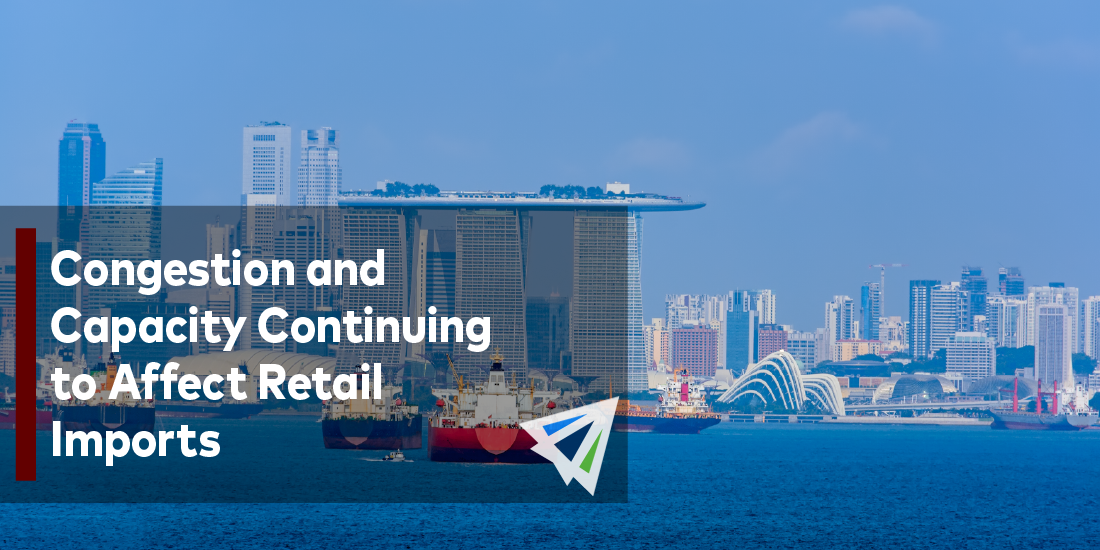The National Retail Federation says retail imports are at an all-time high, and are expected to continue at incredibly high levels through February.
Forecasts would’ve been higher, but throughput is being limited by congestion, capacity, and labor issues.
While shipments tracked by the National Retail Federation (NRF) are incredibly high, they weren’t record setting in the last couple months (but they did come close.) The NRF reported that they saw 2.27 million TEUs come through in August, which was up 3.5% since the previous month, and 7.8% year-over-year. This made it the second busiest month the NRF has seen since it’s 20-year old conception.
The busiest month was May, where the NRF saw a total of 2.33 million TEUs of throughput.
The reason August didn’t meet record-breaking expectations was predominantly due to the congestion experienced at U.S. ports right now. LA/Long Beach continue to make the news with having had nearly 70 container ships anchored off-shore awaiting docking not long ago.
There are several reasons for the congestion – labor shortages, COVID outbreaks, port shutdowns in Asia, lack of available drivers, low empty container capacity, and the use of smaller container ships contributing to more congestion. Container ships are waiting at berth longer than ever before.
In addition to this all, we continue to hear about the increase in consumer demand, and it’s true. Consumer spending is at an all-time high, and several retailers are on backlog with product availability as they import more goods to keep up with the ever-increasing orders. As a result, the NRF is forecasting that the current state of shipments will remain through February of 2022.
The NRF is forecasting September to be a year-over-year increase of 6.7%, but October to be a decrease of 0.3% due to the massive spike in imports last year at the back-half of the pandemic. Continuing the forecasting year-over-year, they are expecting: November (+2.9%), December (-0.2%), January (+5.7%), and February (+1.4%).
Overall, NRF imports are up 18.1% year-over-year growth this year, but the growth would have been much more extreme had congestion and port issues not been a bottleneck in the process.
